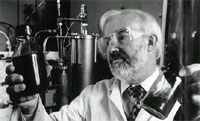Retro clean
 recent developments in environmental technologies in the uk will lead to the improvement of a popular gas-run industrial turbine, making it ultra-clean with regard to emissions. The turbine is the industrial Avon engine, which is derived from an engine first developed in the 1950s to power military and civil aircraft. Although the Avon is outdated for use in aeronautics, it has become one of the most successful gas turbines due to its reliability, low running costs and an exceptionally long life.
recent developments in environmental technologies in the uk will lead to the improvement of a popular gas-run industrial turbine, making it ultra-clean with regard to emissions. The turbine is the industrial Avon engine, which is derived from an engine first developed in the 1950s to power military and civil aircraft. Although the Avon is outdated for use in aeronautics, it has become one of the most successful gas turbines due to its reliability, low running costs and an exceptionally long life.
The research began on the premise that the long-term potential of the turbine will be reinforced if a way is found to further lower its already low emissions of nitrous oxide (n2o) and carbon monoxide (co). So, emissions technologists at the gas powerplant development centre of the industrial giant Rolls-Royce set about doing to the Avon what they had already accomplished with another larger industrial turbine known as rb 211: putting in the dry low emissions (dle) technique. The technique had come about as a breakthrough in the mid-1990s and has given the rb 211 engine a huge advantage over its competition.
However, to develop a clean combustion system that could be retrofitted to Avon engines worldwide was a difficult task. In particular, they wanted to restrict the overall size of the turbine, one of the most compact in the world. Many industrial Avons are fitted on offshore platforms or at gas and oil pumping stations, where space constraints are common.
The researchers decided to take the core of the technology from the rb 211 dle and develop a way in which it could be used in the existing Avon engine. It was essential that the modifications were simple to retrofit to the engines, apart from being cost-effective ( LPS Newsletter , August 10, 1999).
The researchers began by developing a new type of combuster that relied on a
